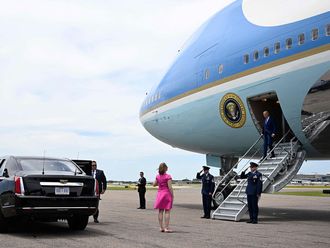London: Luxury goods retailers selling high-end cars, boats, private jets, art, antiques and jewellery are being used by the corrupt to hide the illegal proceeds of crime — and to escape detection, according to research.
Awareness of money laundering rules in the luxury sector is low and few report signs of suspicious transactions, such as customers paying in large amounts of cash, who are in a hurry to complete the purchase, and are not using a lawyer, according to Transparency International UK.
The sector has “major compliance issues,” enforcement is low and its understanding of the rules and threats are poor, the group said.
TI, which earlier this year sounded the alarm about money laundering risks in the British property market, is in its new report turning its attention to the supervisors. One of the worst, it says, is HMRC, which has oversight of anti-money laundering (AML) rules for high-value dealers in the luxury goods and auction houses, arts and antiques sectors.
“HMRC have an institutional bias towards secrecy and confidentiality and that hampers their effectiveness as an AML supervisor,” Nick Maxwell, TI’s head of advocacy and research, told the ‘Financial Times’. “All of their sectors are the worst performing, and all of that does come down to the supervisor.”
High-value dealers, estate agents, banks, lawyers and other regulated entities are required to file so-called suspicious activity reports to the National Crime Agency if they suspect any wrongdoing. But that system is failing, TI says, and “billions of pounds of corrupt funds are pouring into the country every year.”
The group are calling for a “radical overhaul” of the UK’s anti-money laundering system to stem the flow of funds.
Money laundering is the act of hiding ill-gotten gains, often stemming from bribery, tax evasion or embezzlement. The British government believes that billions of pounds of suspected proceeds of crime illegally flow through the country every year.
“The cornerstone of the problem is with the institutions that should be supervising the anti-money laundering rules in the UK,” TI said. The current system, which relies on 22 separate agencies with oversight of the rules in different sectors, “is structurally unsound,” the group added.
The campaigners want the UK to overhaul the supervisory system to encourage better compliance and provide better information about the risks to the private sector. One option is to consolidate the number of supervisors, and to place higher responsibility on senior managers, the group said.
While 1,294 high-value dealers are registered with HMRC, there is no fit and proper test assessing the supervised population, and the level of anti-money laundering enforcement was the lowest of all the sectors reviewed. The number of dealers who are registered is also probably too low, according to TI.
HMRC only issued 677 penalties in 2014 to 2015, totalling £768,000. That amounts to an average fine levied by HMRC of £1,134 for companies that break money laundering rules.
The number of suspicious reports filed by auction houses and arts and antiques dealers during the year to September 2014 only amounted to 15, the lowest of all the sectors TI reviewed. That is 0.004 per cent of the total filed in the UK in the period. Suspicious reports from the luxury sector were a bit higher at 331, but still only amounted to 0.09 per cent.
The figures were obtained by TI through a freedom of information request to HMRC, the group said.
“While many luxury goods items are expensive enough to require some form of customer due diligence checks on the purchaser, there is little evidence of awareness or compliance in the industry of AML obligations, making the sector a significant loophole in the UK economy for illicit funds,” the group said.
While reporting of suspicions “appears to be inadequate in almost all sectors,” TI credited the Financial Conduct Authority for having the most effective supervision, but still said there were “persistent problems” with compliance by banks.
The legal services and accountancy sectors, however, had low ratings by the campaign group of the number of suspicious reports they filed last year.
— Financial Times












